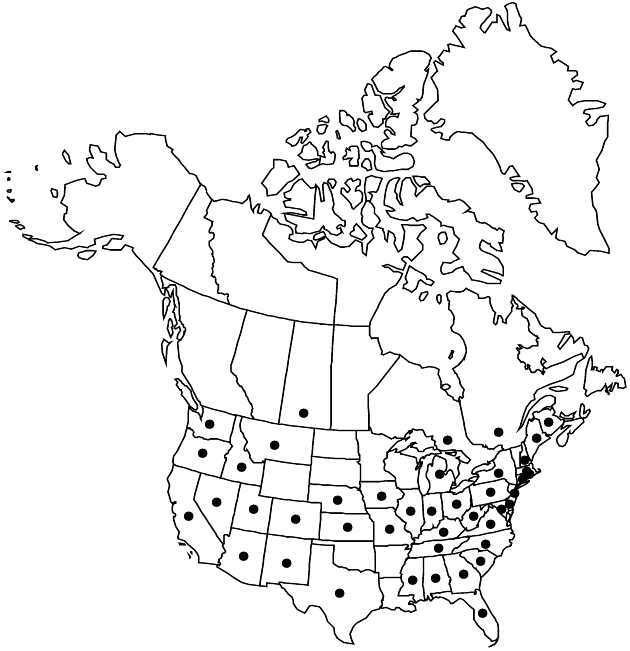Xanthium spinosum
Sp. Pl. 2: 987. 1753.
Plants 10–60 (–120+) cm; nodal spines usually in pairs, simple or 2–3-partite, 15–30+ mm. Leaves: petioles 1–15 (–25+) mm; blades ± ovate to lanceolate or lance-linear, 4–8 (–12+) × 1–3 (–5+) cm, often pinnately 3 (–7+) -lobed, abaxial faces gray to white, densely strigose. Burs 10–12 (–15+) mm. 2n = 36.
Phenology: Flowering Jul–Oct.
Habitat: Damp or seasonally wet, alkaline soils, waste places, margins of agriculture
Elevation: 10–1000 m
Distribution

N.B., Ont., Que., Sask., Ala., Ariz., Calif., Colo., Conn., Del., Fla., Ga., Idaho, Ill., Ind., Iowa, Kans., Ky., Maine, Md., Mass., Mich., Miss., Mo., Mont., Nebr., Nev., N.H., N.J., N.Mex., N.Y., N.C., Ohio, Oreg., Pa., R.I., S.C., Tenn., Tex., Utah, Va., Wash., W.Va., Mexico, Central America, South America, widely established in Old World
Discussion
Some authors have contended that Xanthium spinosum originated in South America and is introduced and/or naturalized everywhere else that it is found.
Selected References
None.